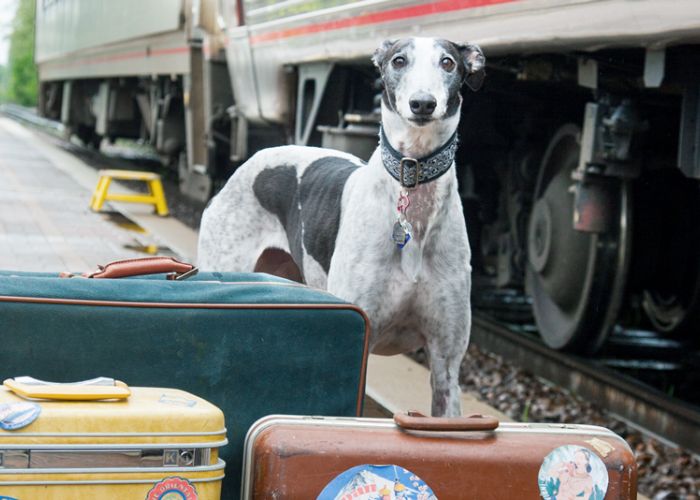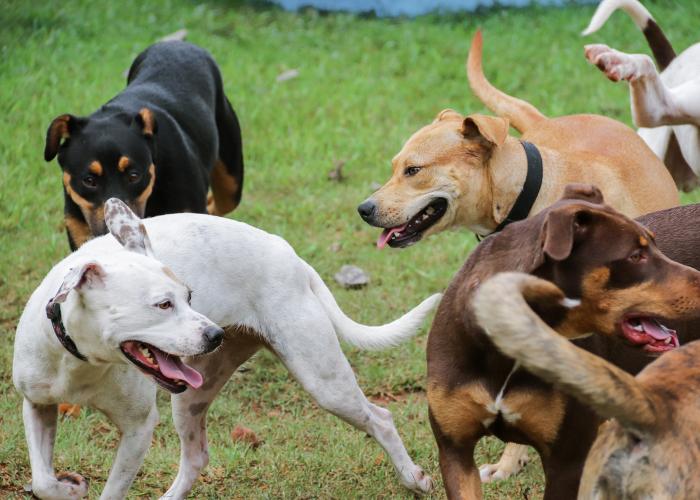The long arm of the paw
Police unit offers care and rehab for animal abuse victims
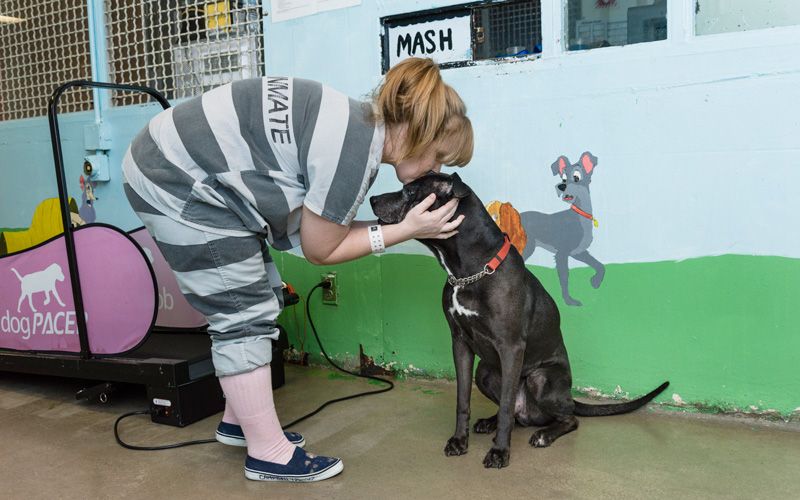
As Sgt. Gary Miller strolls the corridors of the First Avenue Jail in Phoenix, Arizona, he offers some of the most effusive greetings the cells’ occupants have ever heard.
“Hey there, buddy! Are you a good boy today?” He reaches through the bars and offers a pat on the head. A slobbery tongue emerges and swipes at his hand.
As the licking and the pastel-painted walls indicate, this is not your average jail. Where there was once a rooftop “yard” for human prisoners to get fresh air, now there is a run and leash-training space. A passerby might look into a cell and see a feline head pop up from the glistening silver bowl of a disused toilet. And in the bunks that formerly housed accused or convicted criminals, cats cuddle and dogs lounge as they await the outcomes of their cases.
The animals at the Maricopa County Animal Safe Haven (MASH) aren’t being accused of anything. As Miller explains, “Everybody here is either evidence or a victim.” The one-of-a-kind facility houses, rehabs and (when owners surrender animals voluntarily or lose their cases) finds new homes for animals who were entangled in abuse cases.
As with many creative ideas, the jail-turned-shelter concept was one borne of necessity. In 1999, the First Avenue Jail was deemed uninhabitable by people due to outdated plumbing. At the same time, the Maricopa County Sheriff’s Office was investigating a spree of cat mutilations and killings by a local cult. During a raid, police seized several dozen live cats but had nowhere to store the “evidence.” Local shelters and rescues were at capacity, and because they were now part of an investigation, the cats would have to remain in custody as long as the case was ongoing. The idea emerged of using the former jail, and cells that once housed criminals became places of refuge.
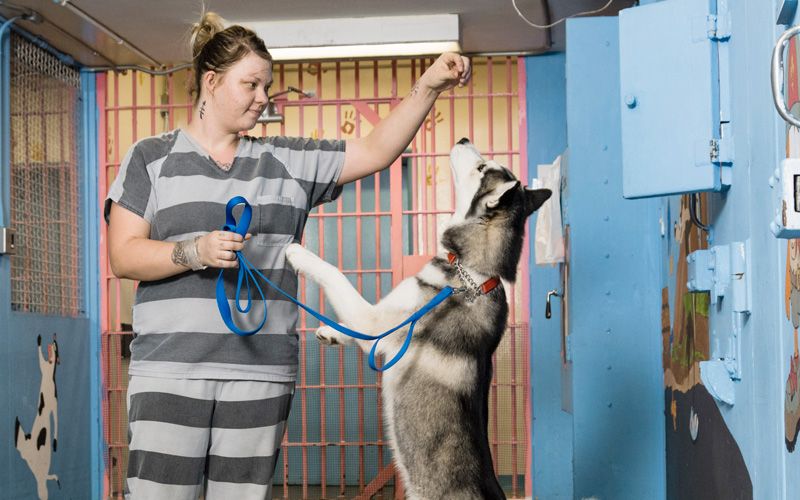
Meaningful transformations
Along with the unusual accommodations, one thing that makes the MASH unit unique is its dedicated staff. While many jurisdictions have only one or two officers tasked to animal abuse cases, two sergeants and 11 officers are assigned to MASH full time. This staff is separate from the five detectives within Maricopa County’s Animal Crimes Investigations Unit.
Inmates from the local women’s prison do much of the heavy lifting when it comes to the animals’ care and training. After background checks—inmates with issues involving animal welfare, for example, are disqualified—those who nab the coveted MASH assignments work long, demanding shifts to clean up after the animals, groom them, and exercise and train the dogs in the rooftop play yard. (They learn leash-training skills from the officers, along with local dog trainers under contract with MASH.)
“We have no discipline problems here,” says Miller, who adds that the MASH positions are considered the best jobs available, even though they’re also among the hardest. MASH, Miller explains, “is part of a change in the entire way we handle animal abuse cases.” Before, officers were far less likely to seize animals, much less rehabilitate and rehome them.
And MASH’s approach is changing the way other jurisdictions handle animal cases, as well. Maricopa County is a frequent host to visitors from other parts of Arizona and all over the country who come to see how MASH and the Animal Crimes Investigations Unit operate. Because of MASH, says Miller, more jurisdictions in the state have one or more detectives assigned exclusively to animal crimes.
MASH is funded largely through taxpayer dollars, which has been a source of pushback from a small portion of the community. The sheriff’s office is quick to underscore the links between crimes against animals and crimes against humans. According to a 1997 study conducted by Northeastern University and the Massachusetts SPCA, those who abuse animals are five times more likely to commit violent crimes against humans, so from the perspective of officers in the MASH unit, they’re not only helping animals, but creating a safer community for humans.
Even the community behind bars is gentler, Miller says. In many cases, he’s seen the inmates soften as the animals they’re helping start to learn to trust again. “They go from talking about getting high to talking about their kids,” he says.
After their release, some inmates are permitted to adopt MASH animals. One former inmate enrolled in a vet tech training program after her release.
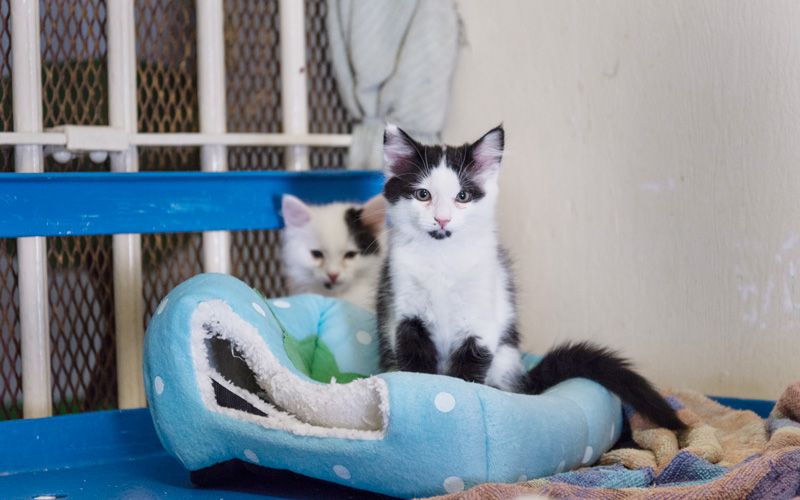
The inmates aren’t the only ones pitching in. Local Boy Scouts helped to build elaborate cat condos and paint prison walls, including several large murals. Attorneys come from the courthouse across the street, giving up their lunch breaks to take adoptable dogs out for walks around the city. A local resident saw the dogs out and about and volunteered to make brightly colored “Adopt me” vests for the pooches. Officers report that the lunchtime walk program has resulted in a dramatic increase in adoption inquiries.
And that’s the best part of working with MASH—the full-circle view, says Sgt. Isabel Garcia, who helps to oversee the unit. “You get to see the aftermath—to see the animals change. It’s just [so] rewarding.”
According to Kellye Pinkleton, HSUS Arizona state director, MASH is also notable for its willingness to partner with local organizations. When she first became aware of the agency after the sheriff’s office helped with a major puppy mill bust, “I quickly realized MASH was doing some incredible work … with very little resources,” Pinkleton says. But she also realized that a lot of people had never heard of MASH, so she reached out to contacts at the Phoenix Animal Care Coalition (PACC911)—which represents more than 100 animal welfare organizations throughout the state—and organized a tour of the facility.
When PAC911 and other community leaders saw the work MASH was doing, as well as the gaps in resources (for example, several hard-to-place dogs had been at the facility for years because the organization had a limited network to advertise them), the groups mobilized to help. In addition to expanding advertising of adoptables, the groups have also collected thousands of dollars worth of supplies for MASH and offered training in shelter and adoption best practices, as well as animal care skills.
Recently, Miller and another officer attended an HSUS Humane Lobby Day with two adoptable dogs. “It’s just a really nice partnership forming between nonprofits, community leaders and a county agency,” says Pinkleton.



